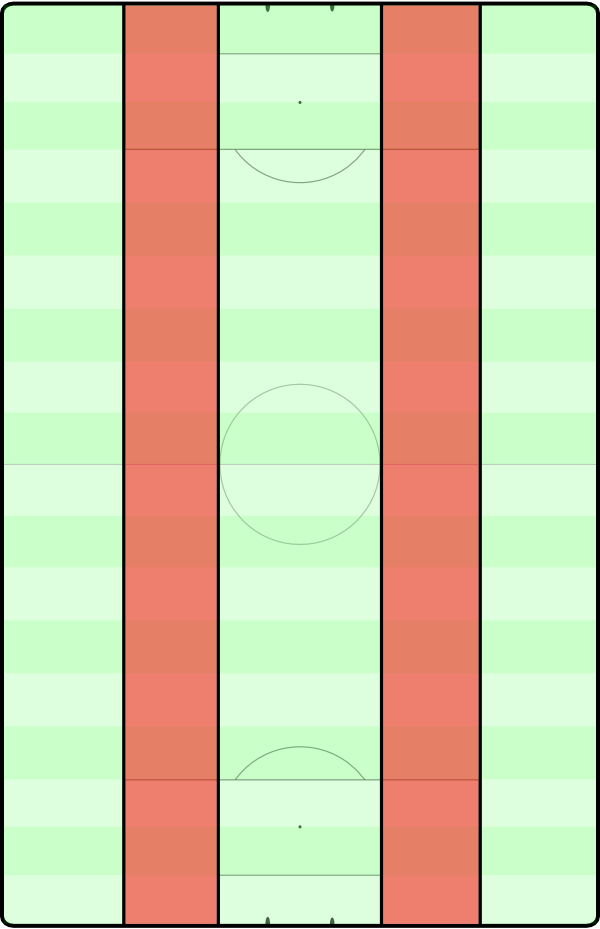Half-Space
In contrast to solely geometrical zoning of a pitch, one can also divide the field into certain zones, while taking tactical aspects into consideration. Particularly, half-spaces, the vertical strips between centre and wings, have played a crucial role in the recent past. Among other things, the half-space exists for the purposes of an analytical approach. Looking at the movements of the two teams, you do not only recognize different positioning, when the ball is on the wing or in the centre, but also when it is in between – in the half-space.
By adding the half-spaces, the strategical facets of a pitch change. When ball carriers are in the half-space, they have as many options as a ball carrier in the middle, but can cause more diagonal passing and movement patterns towards the outside or the middle, while their goal-orientated fields of vision do not change. In contrast, ball carriers in the middle have to avert their gaze at the opposing goal when intending to play to the outside.
By the way, while half-spaces seem to be just static zones, they could also continually change during a match. This is the concept of an effective field, in which the half-spaces as well as other zones vary consistently, and become situation-dependent, dynamic half-spaces.
